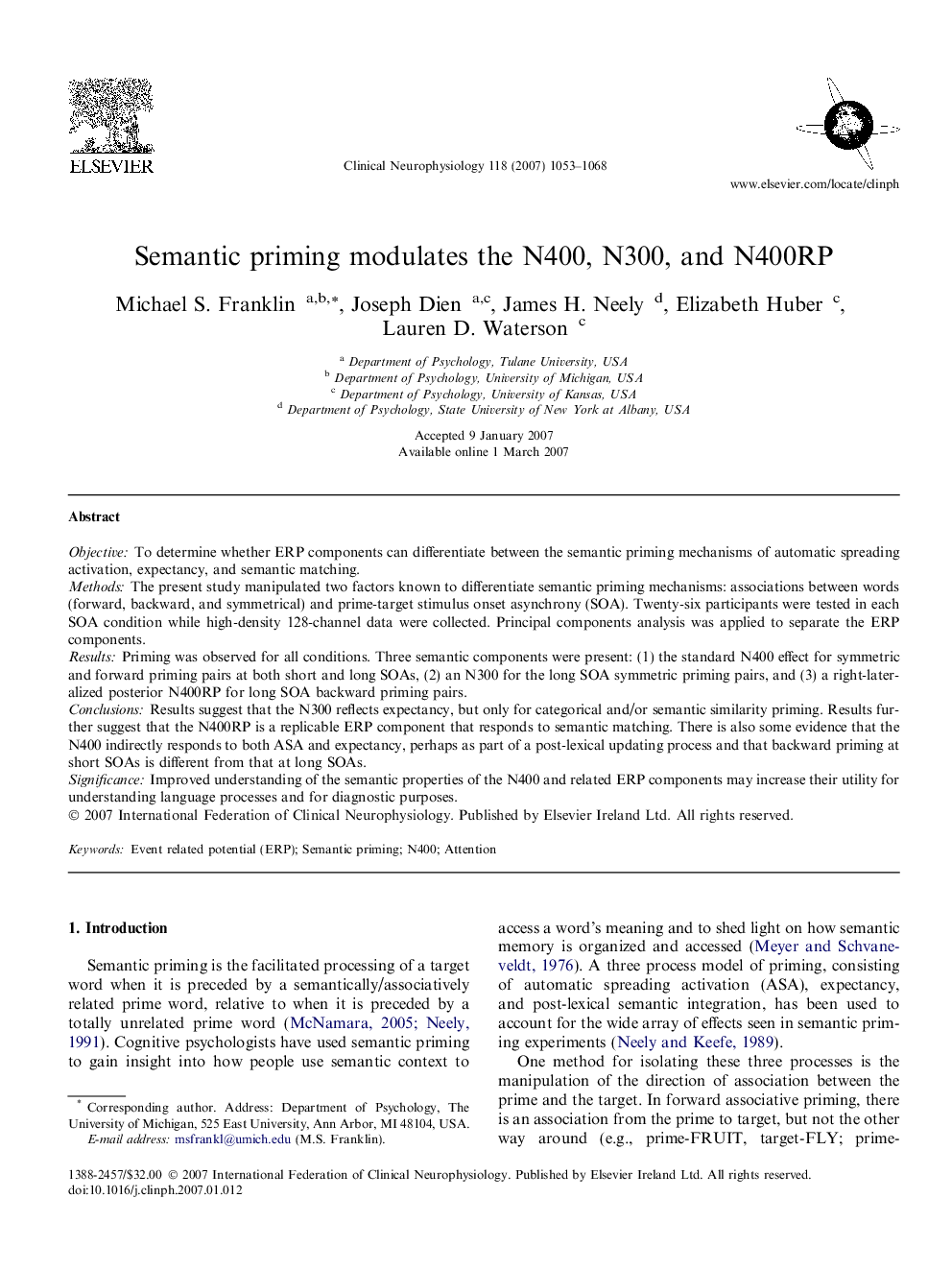| Article ID | Journal | Published Year | Pages | File Type |
|---|---|---|---|---|
| 3048527 | Clinical Neurophysiology | 2007 | 16 Pages |
ObjectiveTo determine whether ERP components can differentiate between the semantic priming mechanisms of automatic spreading activation, expectancy, and semantic matching.MethodsThe present study manipulated two factors known to differentiate semantic priming mechanisms: associations between words (forward, backward, and symmetrical) and prime-target stimulus onset asynchrony (SOA). Twenty-six participants were tested in each SOA condition while high-density 128-channel data were collected. Principal components analysis was applied to separate the ERP components.ResultsPriming was observed for all conditions. Three semantic components were present: (1) the standard N400 effect for symmetric and forward priming pairs at both short and long SOAs, (2) an N300 for the long SOA symmetric priming pairs, and (3) a right-lateralized posterior N400RP for long SOA backward priming pairs.ConclusionsResults suggest that the N300 reflects expectancy, but only for categorical and/or semantic similarity priming. Results further suggest that the N400RP is a replicable ERP component that responds to semantic matching. There is also some evidence that the N400 indirectly responds to both ASA and expectancy, perhaps as part of a post-lexical updating process and that backward priming at short SOAs is different from that at long SOAs.SignificanceImproved understanding of the semantic properties of the N400 and related ERP components may increase their utility for understanding language processes and for diagnostic purposes.
